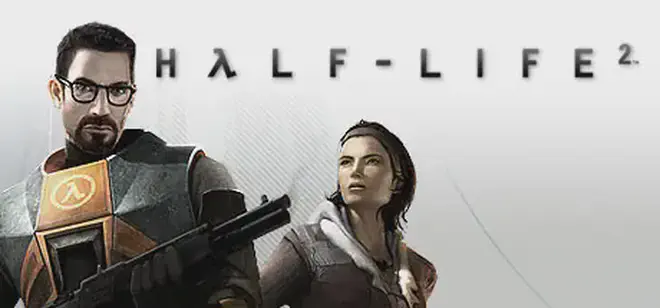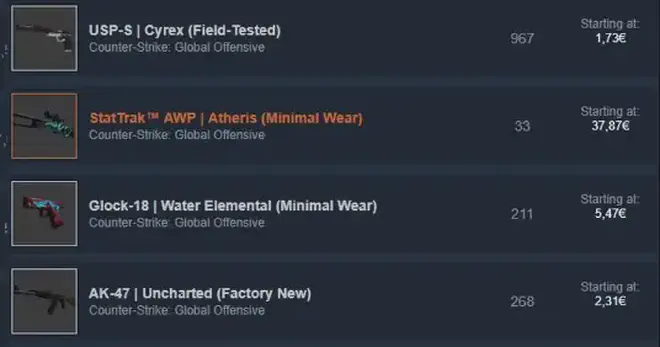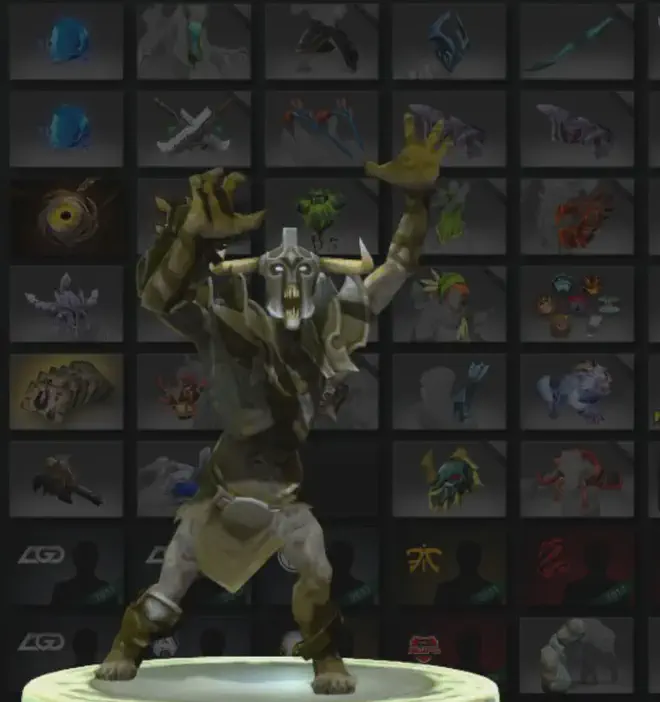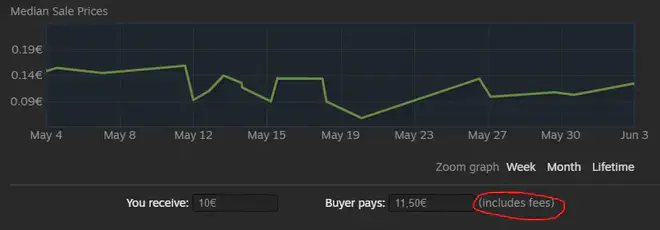Valve is a company that was near and dear to my heart. Their games are memorable and unforgettable experiences. My friends and I play multiplayer shooters like Counter Strike or Team Fortress all the time. In addition, Valves singleplayer adventures with organic progression and exploration through the levels of Half Life or Portal, are immensely enjoyable. I followed Valve closely for over 5 years and as a result, I am disappointed.

In my eyes, Valve shifted from being a company that cared about the quality of their products, to a company that just designs monetization schemes.
Companies need money, I understand that. #
But when is enough, enough? This article is a complementary piece to a video that I produced for my YouTube channel. You can watch this video right here!
Valve made good games. So what is the problem? #
Of course, Valve created amazing gaming experiences. Their engine, the Source Engine was incredible when it launched and the generous use of physics in objects, ragdolls and even in the environment, was baffling at the time. The company created games, which are very different when compared to each other. For instance the Left 4 Dead Series puts heavy emphasis on coop play and is all about horde survival, progression and interaction within the game world. However, Portal is a stark contrast to what Left 4 Dead is about, because it is a singleplayer puzzle game.
Even the most popular Valve titles right now, are good games. Counter Strike Global Offensive, Team Fortress 2 and Dota 2, gathered dedicated fan communities that play those games extensively.
The problems arise, when you take a look at how they generate revenue. #
As I said before, this article is a complementary piece to a video I embedded above. If you watched the video, you know that I showcased the following points about Valve’s business practices:
- Steam Store lacks quality control
- Multiplayer games are aggressively monetized
- Valve outsources work to their fans
- Valve lets mod teams develop sequels or remakes to their games
- Neglect of games
This article gets into the details. Things I kept short or left out in the video, are expanded upon or added here. So, let us take another look at the Steam Store, the Monetisation Schemes and the Modding Communities.
The Steam Store: an intended mess #
It is no secret that Steam got a quality problem. It wasn’t always like this though.
People that got into gaming after 2010, might not realize that Steam was a platform that sold Valve titles only at first. In the beginning, Steam was rather unpopular actually, due to the fact that games must be activated first before playing. Valve went on to allow third party games on their store after a while, but there were some standards set in place, to limit what kind of games get onto the store. You could not sell games that were unfinished. Some games were even deemed too distasteful or graphic to be sold on the Steam store, one of those games being Postal 2.
But there has been a shift thanks to the Steam Greenlight and Early Access concepts. Steam Greenlight enabled players to vote for games submitted into Greenlight to make an appearance on the store. The more votes, the likelier it is that a game gets approved by Valve and added to the store. Some games, like the before mentioned Postal 2 were Greenlight successes and went on to be beloved entries in the steam store. Early Access also features some good examples, notably, The Forest. A game that saw a lot of regular updates by the developers, up until the games release.
Yet, the bad outshines the good. #

The image of Greenlight and Early Access that stuck with most players, is a negative one. Both systems were abused regularly to either spam low quality games on the store, or to release unfinished games, to ultimately take the money and run. A perfect example being DayZ.
It was easy to get games approved. And it was even easier getting away with selling unfinished games that were never finished down the line.
What is unbelievable, is that the Steam Store became even worse. Valve replaced the Greenlight system, with an entry fee of about 100$. In addition to that, Steam even allows the sale of pornographic content, which further decreases the quality of the store indefinitely. Some games, like Active Shooter or Rape Day have sparked international outrage or disappointment in Steam before too. Valve sells games, regardless of their quality and even if those games hurt the overall reputation of their platform.
Monetization of games: How bad can it be? #
Currently, Valve has four multiplayer only titles that feature monetization models. Those games being Team Fortress 2, Counter Strike Global Offensive, DOTA 2 and Artifact.
In three of those four games the monetization model mainly revolves around cosmetic items. In Team Fortress, it’s weapons that count your kills and apparel, in Counter Strike it’s skins and in DOTA 2, its nearly everything visual, even including heads up displays and loading screens. To Valve’s credit, most of their monetization schemes actually are cosmetic only and don’t affect gameplay. But they affect the players minds regardless.
I spent way too much money on cosmetics I did not even want to buy in the past. Hats, skins and even loading screens.
Team Fortress 2 #

I spent so much for multiple reasons. One of those reasons being peer pressure. In Team Fortress 2 especially, the free to play players, were regarded as second class players of sorts. Due to lacking experience, many of them being children and them having no cosmetic items on their charackters, meant that they were easily recognizeable. Many player hosted servers even featured plugins that show what player is free to play and what player has a premium account. Free to players also had an increased risk of being banned from servers, due to the suspicion of hacking. Someone that doesn’t own special weapons or cosmetics, can’t be good at a videogame… right? So I caved in. I bought my first cosmetic and sadly, I became one of those people that judged others for not owning a specific set of cosmetics.
Second reason was backpack space. Backpack space is important in Team Fortress, since you collect different weapons that change up the playstyle of every class. A free to play gamer only has one page of backpack space, and this one page fills up fast due to frequent item drops and achievement item unlocks. After buying your first item from the in game store, you are awarded expanded backpack space. The space is not unlimited though. If it runs full again, you need to expand your backpack further.
Team Fortress 2 was the first game of the bunch that implemented its own version of the lootbox. Crates give you weapons, cosmetics and special items, but you need to buy a key to open one of them.
Counter Strike Global Offensive #
Counter Strike Global Offensive mostly makes money through weapon skins, stickers and campaigns, amongst other things.

The game also features various loot box variations and the campaigns the player buys, feature special missions to complete for special item drops. In Counter Strike players can buy weapon skins, glove skins, stickers, sprays that only have a limited use, but not items that can change the playstyle of the player. A significant improvement over the monetization scheme of Team Fortress 2.
Players pride themselves in the expensive or rare items they possess and this can influence other players, just like it influenced me. Buying keys and unboxing loot boxes for the hope of finding that one knife skin, can quickly become a money sink.
DOTA 2 #
This game features many characters and even more microtransactions. Every hero features item sets at varying prices, variations of loot boxes and even things like alternative mouse cursors and heads up displays.

DOTA 2 might be the most appropriately monetized game from them all, but there also is DOTA plus. DOTA plus shows players detailed analyses of play sessions and strategies of the player, to help them improve their skills. It is an additional service that is entirely optional and not nescessary to improve in the game, but it does give players a slight advantage when it comes to quick improvements and learning. This is a debateable practice though and could be seen as unfair, or insignificant depending on the person.
Similarities #
Every game of those three mentioned, features certain aspects that are similar across the board. Every game relies on the sale of loot boxes. They all try to influence the player to buy more digital items and all games rely on the premise of items being valuable.
But another similarity, is how you trade those items. #
All those games support trading systems that allow players to exchange items and even allowing monetary gain. There are multiple ways to trade items. You can trade items through the Steam platform, on a third party site or through the community market. This allows many ways of scamming and taking advantage of players that are not aware on how the trading systems work. But the most interesting aspect for me, is the Community Market.

No matter what you sell, Valve always get a cut. #
On the Community Market you can buy and sell items ranging from Steam Trading Cards, in-game items and miscellaneous Steam items. Every single item sold, includes a small fee that Valve pockets. With the monetization schemes in-game, paired with the Steam Community Market and trading culture of the player base, Valve generates a staggering amount of income without putting in much work.
But Valve doesn’t create those items #
Those three games rely on community made maps, skins, items, cosmetics, art and more, to generate revenue with the least work possible. Artists and modders upload their submissions to the Steam Workshop. Those items are voted onto the in-game marketplaces. As a result, the original creator gets a percentage cut for sold copies of their items.
This practice is bitter sweet. On one hand it is good to know that modders can get compensated for their work. But on the other hand this seems as just a way to save money for Valve. Creating assets for video games is a long winded and expensive process. Why would a company create those assets themselves, if modders can do so for a small percentage off every sale of that item?
The most extreme example yet: Artifact #
Artifact is the latest Valve title, yet unlike any other Valve game, it got a very negative reception. The game features exceptionally aggressive monetization. The player has to buy most of his cards to create a decent deck, specific game modes are only accessible when paying a fee and there are various other problems surrounding the game. Artifact is the perfect example of how a game designed to maximize profits looks like.
It feels as if you have to pay for everything you do in this game and that was even too much for Valve fans. In terms of gameplay, the game is rather good, but the aggressive monetization doesn’t make this game justice.
Valve and their IP’s #
Another problem, which for me is even more troublesome, has to do with neglect of fans and games. Every game Valve doesn’t gain profit from, faces neglect and indifference from the company. Players have to take matters into their own hands most of the times and need to revitalize the games they love themselves. They do this with mods, map packs and custom campaigns.
But a bigger problem is that Valve allows random development teams to create anything that could be seen as a remake or sequel to one of their games. There are good examples, but many more bad examples. One good example here is Black Mesa.
The developers of Black Mesa are hard workers and gain approval by their fans with every update. It is amazing that a game, that once was a mod, can achieve such a level of quality. But the project is not supervised or controlled by Valve, even though it is a remake of the first Half Life game. An example, that definitely lies on the bad side, is Hunt Down the Freeman.
It is baffling that this game is purchasable on the Steam Store. Hunt Down the Freeman is the icon of Valves neglect and indifference towards their games. It embodies every problem the Steam Store is facing right now. This game should not be for sale on the Steam Store, yet it is.
It’s a terrible time to be a Valve fan. Not only due to the lack of games, but more due to Valve not being able to care.
Thank you for reading this article.
